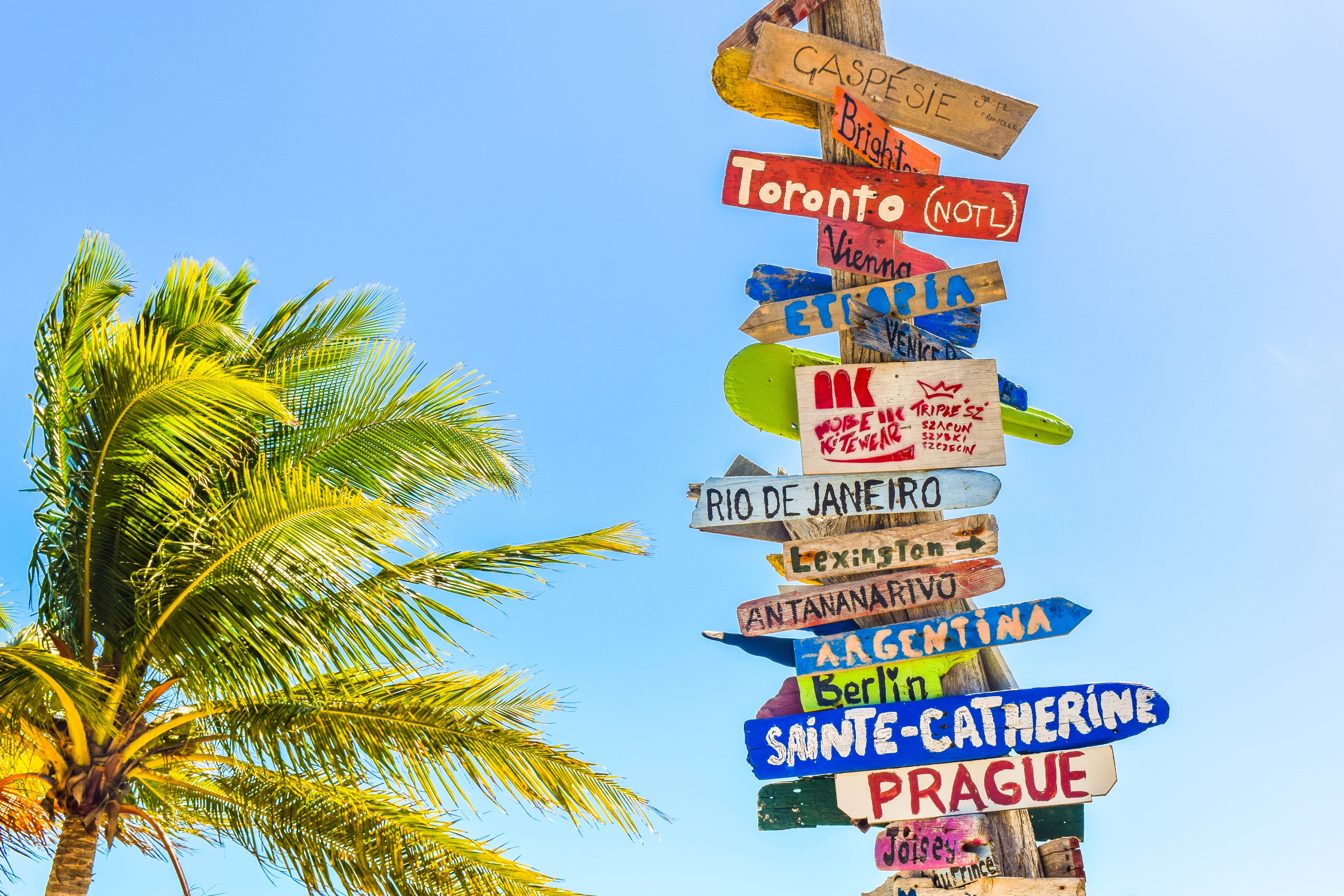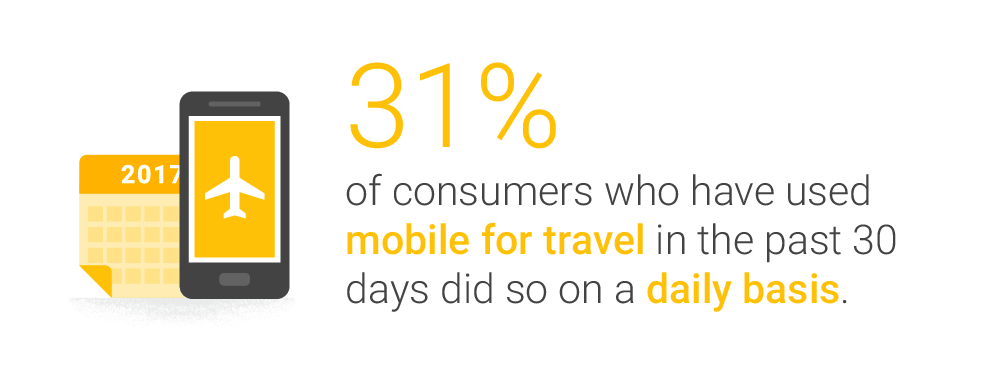
Brace Yourself; Vacation days coming!
Whether it is the summer or winter season, the desire to travel never misses the opportunity. For those who want to plan their trip, but also those who produce and sell vacation-related products and services.
The desire to explore the world has not changed over the last century, and will not change in the next future. What has evolved dramatically - in the last decade - is the way we research, plan and purchase our trips. What Google has called The Travel Customer Journey. A disruption made possible - again - by the smartphone.
Long gone are the days when planning a vacation (a honeymoon or a business trip) meant you had to trust a specialized agency, with little control over the final result. In the nineties, the Internet has opened a whole world of information for the customers, and then mobile technology did the rest, switching the balance of power definitely.
Today, the smartphone is the first point of reference whenever we need to find the solution to a problem or the product that perfectly fits our needs. Travel planning makes no exception, as perfectly summed up by a series of reports released by Google on Think With Google.
“As more research happens in the traveler's customer journey, there are more micro moments - when people turn to a device with intent to answer an immediate need. In these moments, the stakes are high for travel brands as preferences are shaped, and decisions are made. What happens in these micro-moments ultimately affects the travel decision-making process.”
In our times of economic constraints, organizing a vacation can be tricky business:
- People see the travel as an investment, and so take all the time needed to research the possibilities (mostly using their mobile devices).
- Travelers usually worry they are not finding the best solution or making the best decision, even while they are paying and booking.
- Even when they find a last minute opportunity, most customers bounce back and forth between destinations, websites, agencies, and price comparison engines.
Customers are much more conscious and demanding than in the past. They spend more time researching and comparing the alternatives (in terms of destinations and providers). They go through a multitude of touchpoints and, even though they take quick decisions, ultimately ponder every single detail.

If your brand plays in this industry, the task is clear and simple:
- You must show up during the critical micro moments of travel research process;
- You must be there, reachable whenever customers need your attention or help;
- You must be useful, engaging them with relevant, useful, personalized contents and offers;
- You must be quick. If you do not convert your customers, someone else will (namely a competitor).
The main reference for this article is the ‘Travel Micro-Moments Guide’ published by Google. The underlying assumption is that “travelers increasingly turn to mobile in real time and on-the-go, making informed decisions faster than ever before. For marketers, this means there are new opportunities to connect throughout the entire travel customer journey, across devices and channels.”
Researchers have defined four main travel micro moments that matter:
I Want To Get Away - We explore options and ideas, looking for inspiration.
Time To Make a Plan - We have a destination, and look for dates, flights, accommodation.
Let’s Book It - We are ready to book and look for extra activities to reserve.
Can’t Wait To Explore - We prepare to live the experience, and share it with the others.
Given the premise, we see a huge opportunity for those who provide products and services related to the various the steps of the travel experience. The digital customer journey of the travelers has become more complex than ever, and so you have multiple chances to engage customers.
Whether you are an online or offline business, you may tap into one of the main micro moments or everywhere in between those, proposing suitable and innovative solutions. In example: a micro-insurance delivered on the smartphone at the right time; a local transportation mobile app filled with shopping and entertainment suggestions; a conversational interface or Facebook Messenger chatbot that helps customers find the best prices or deal.

Of course, mobile is the keyword to understand the new scenario, because the micro moments mostly unravel online:
“Recent data show that there are already more searches on mobile than desktop for select travel categories, such as family vacations and luxury travel. And when it comes to planning holiday activities, mobile devices are giving travelers increased flexibility. Many travelers are willing to plan activities on the fly, while they are at their destination.”
The optimization for mobile is mandatory now that customers take faster decisions and expect faster experiences:
“Over 90% of travelers using mobile devices will switch to another site or app if their needs are not being met. 79% of mobile travelers say that when researching on their smartphones, they are looking for the most relevant information available, regardless of where it comes from.”
The continuous transition from the real world to the digital dimension generate a whole new set of data that you can use to get a better understanding of customers. When it comes to travels, in fact, not all customers are equal.
Also, this type of experiences is heavily influenced by the emotional and psychological traits. Data-backed psychographics research becomes essential if you want to sketch a proper customer journey map, build a successful digital strategy, and ultimately deliver truly personalized contents linked to the emotional profiles of the different customers.
Once you determine customers’ behaviors and deepest needs, you can anticipate their needs and desires. You will also be able to prioritize the right audience and target the most valuable customers with tailor-cut contents, notifications, and promotions.
“Travel marketers need to account for the new multi-device, multi-channel landscape. And those who are moments-ready—and consistently manage their share of intent to meet consumer demand—will take the lion's share of the reward.”
Download The Mobile Engagement Playbook, a collection of relevant insights that'll help you to overcome the challenges of the digital transformation and grow your business exponentially.



 Your magnifing glass to deeply understand your users and increase the value of each relatonship.
Your magnifing glass to deeply understand your users and increase the value of each relatonship. Listen to the voice of your customers deeply to understand what they truly want.
Listen to the voice of your customers deeply to understand what they truly want. The Lead Generation Platform to get leads from anonymous traffic on your website.
The Lead Generation Platform to get leads from anonymous traffic on your website.  Understand the behavior of people in physical spaces and monitor safety requirements.
Understand the behavior of people in physical spaces and monitor safety requirements. The Digital Commerce Platform designed to follow the most modern technological standards..
The Digital Commerce Platform designed to follow the most modern technological standards.. The XReality platform to tell brand and product stories by connecting physical and digital worlds.
The XReality platform to tell brand and product stories by connecting physical and digital worlds. Points, rewards, levels, badges, missions: a world of nudges to nurture your customer community.
Points, rewards, levels, badges, missions: a world of nudges to nurture your customer community. Discover all the other solutions!
Discover all the other solutions!









